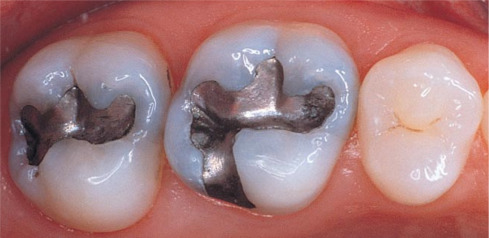CORROSION

The following about corrosion –
i) Silver articles become black after some time when exposed to air.
This is because it reacts with sulphur in the air to form a coating of silver sulphide.
ii) Copper reacts with moist carbon dioxide in the air and slowly loses its shiny brown surface and gains a green coat. This green substance is basic copper carbonate.
iii) Iron when exposed to moist air for a long time acquires a coating of a brown flaky substance called rust.
Let us find out the conditions under which iron rusts.

Investigating the conditions under which iron
rusts. In tube A, both air and water are
present. In tube B, there is no air dissolved
in the water. In tube C, the air is dry.
You will observe that iron nails rust in test tube A, but they do not rust in test tubes B and C. In the test tube A, the nails are exposed to both air and water. In the test tube B, the nails are exposed to only water, and the nails in test tube C are exposed to dry air.
Prevention of Corrosion

The rusting of iron can be prevented by painting, oiling, greasing, galvanising, chrome plating, anodising or making alloys.

Galvanisation is a method of protecting steel and iron from rusting by coating them with a thin layer of zinc. The galvanised article is protected against rusting even if the zinc coating is broken.
Alloying is a very good method of improving the properties of a metal.
We can get the desired properties by this method.
For example, iron is the most widely used metal. But it is never used in its pure state. This is because pure iron is very soft and stretches easily when hot. But, if it is mixed with a small amount of carbon (about 0.05 %), it becomes hard and strong. When iron is mixed with nickel and chromium, we get stainless steel, which is hard and does not rust. Thus, if iron is mixed with some other substance, its properties change. In fact, the properties of any metal can be changed if it is mixed with some other substance.
The substance added may be a metal or a non-metal.
An alloy is a homogeneous mixture of two or more metals, or a metal and a nonmetal. It is prepared by first melting the primary metal, and then, dissolving the other elements in it in definite proportions. It is then cooled to room temperature.

If one of the metals is mercury, then the alloy is known as an amalgam. The electrical conductivity and melting point of an alloy is less than that of pure metals.

For example, brass, an alloy of copper and zinc (Cu and Zn), and bronze, an alloy of copper and tin (Cu and Sn), are
not good conductors of electricity whereas copper is used for making electrical circuits. Solder, an alloy of lead and tin (Pb and Sn), has a low melting point and is used for welding electrical wires together.
